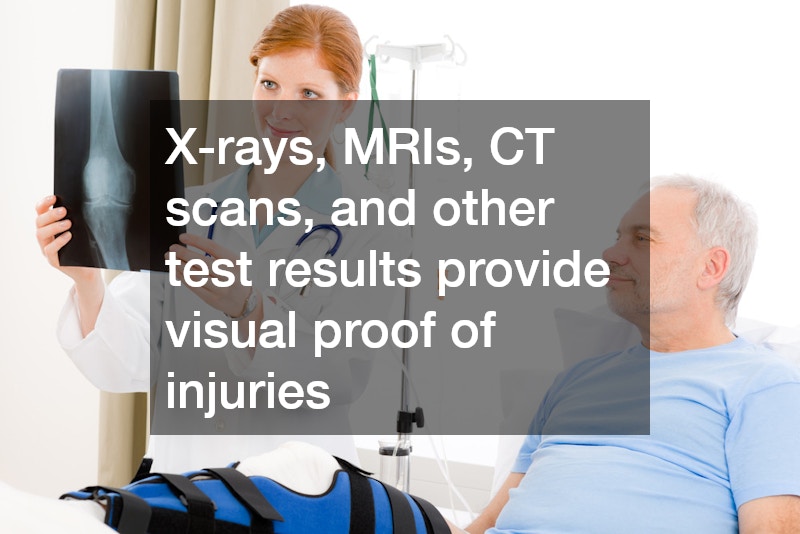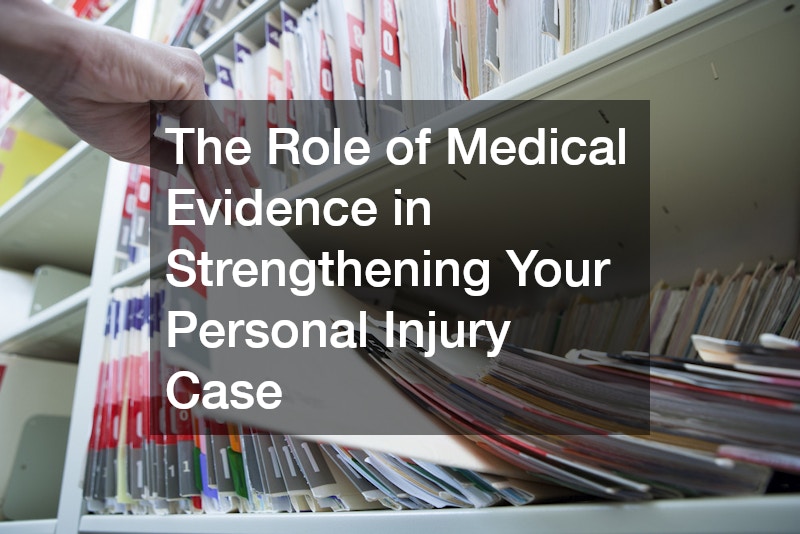Highlights:
-
Medical evidence is essential to proving injury severity, causation, and damages in personal injury claims.
-
Immediate medical care and consistent documentation strengthen case credibility.
-
Types of medical evidence include records, bills, diagnostic images, expert testimony, and therapy reports.
-
Gaps in treatment, incomplete records, or delayed care can weaken your case.
-
Expert medical witnesses can clarify complex conditions and support future care claims.
-
A skilled law firm for personal injury uses medical evidence strategically to maximize compensation.
When you suffer an injury due to an accident, your focus is on recovery—but when seeking compensation, medical evidence becomes the backbone of your case. Whether you were involved in a car crash, slip and fall, or workplace accident, proving the extent of your injuries and their connection to the incident is crucial. This is where medical documentation and expert testimony play a critical role.
For victims, understanding how medical evidence works can make the difference between a weak claim and a strong one. For law firms handling personal injury cases, leveraging this evidence effectively is a key strategy to secure maximum compensation for clients.
In this article, we will explore how medical evidence strengthens a personal injury case, the types of evidence available, common challenges, and how working with an experienced law firm for personal injury claims can greatly improve your chances of a favorable outcome.
Why Medical Evidence Is Critical in Personal Injury Cases
In any personal injury claim, the burden of proof lies on the victim. This means you must demonstrate not only that the accident occurred, but also that it caused your injuries and resulting damages. Medical evidence is essential because it:
-
Proves the existence of injuries – Without medical documentation, it becomes easy for insurers to argue that your injuries are exaggerated or unrelated to the accident.
-
Links the injury to the incident – Doctors’ notes and test results can establish causation between the accident and the harm you suffered.
-
Supports compensation claims – Bills, diagnostic results, and ongoing treatment records provide a clear picture of the financial and physical toll.
-
Strengthens credibility – Thorough, consistent medical records leave little room for dispute by opposing counsel or insurance companies.
For example, consider two similar cases: one victim sought immediate medical care and kept detailed records, while the other delayed treatment and has inconsistent documentation. The first case is far more likely to result in a higher settlement or verdict because the evidence is strong and clear.
Types of Medical Evidence in Personal Injury Claims

There are multiple forms of medical evidence that can strengthen your claim. A skilled law firm for personal injury will gather, organize, and present these records to build the strongest case possible.
1. Medical Records
Medical records are the foundation of your case. They include doctor’s notes, hospital admission reports, treatment plans, and progress notes. These records provide a detailed timeline of your injury and treatment, showing how the accident directly impacted your health.
2. Hospital Bills and Invoices
Bills and invoices not only establish the cost of medical care but also demonstrate the seriousness of the injury. For example, multiple surgeries or extended hospital stays indicate a more severe condition, often leading to higher compensation.
3. Diagnostic Imaging and Test Results
X-rays, MRIs, CT scans, and other test results provide visual proof of injuries that are hard to dispute. These images can clearly show fractures, internal damage, or other trauma caused by the accident.
4. Expert Medical Testimony
In some cases, your lawyer may call upon medical experts to testify. These professionals explain complex medical conditions in simple terms and confirm that your injuries were caused by the accident. Their testimony often carries significant weight in court.
5. Rehabilitation and Therapy Records
For injuries requiring physical therapy or long-term rehabilitation, records of ongoing treatment help demonstrate the lasting impact of the accident. They also support claims for future medical expenses.
6. Photographs of Injuries
Clear photos taken shortly after the incident, as well as during recovery, provide visual evidence of the injury’s severity and progression over time.
7. Medical History Reports
Sometimes insurers argue that your injuries were pre-existing. A thorough medical history distinguishes prior conditions from those caused by the accident, helping to disprove such claims.
How Medical Evidence Is Collected and Preserved
Collecting and preserving medical evidence correctly is essential to avoid gaps that could weaken your case. Here’s how to do it:
-
Seek Immediate Medical Care – Even if injuries seem minor, prompt treatment creates a clear link between the accident and your injuries.
-
Request Complete Medical Records – Obtain copies of all tests, treatments, and follow-up appointments. A law firm for personal injury can help secure these records efficiently.
-
Document Ongoing Treatments – Keep detailed logs of therapy sessions, prescriptions, and medical visits.
-
Avoid Gaps in Treatment – Skipping appointments or delaying care can lead insurers to argue that your injuries are not serious.
-
Work with Your Lawyer – An experienced attorney ensures that evidence meets legal standards and is properly organized for negotiation or trial.
Common Challenges with Medical Evidence
While medical evidence is powerful, certain issues can weaken its impact if not addressed properly.
1. Disputes Over Causation
Insurance companies often claim that your injuries were pre-existing or unrelated to the accident. Detailed medical records and expert testimony are crucial to overcoming these disputes.
2. Incomplete or Inconsistent Records
Missing or contradictory records can harm your credibility. Always ensure your medical documentation is complete and consistent with your account of events.
3. Delayed Medical Treatment
Waiting to see a doctor after an accident can make it difficult to prove the injury was caused by the incident. Immediate medical attention is critical.
4. Privacy Concerns
Sharing medical records involves sensitive information. Your lawyer will take steps to protect your privacy while using the evidence effectively.
The Role of Medical Experts in Strengthening Your Case
Expert medical testimony can be a game-changer in a personal injury claim. These experts:
-
Clarify Complex Medical Issues – They explain injuries and treatments in a way judges and juries can easily understand.
-
Support Causation – They confirm that the injuries were caused by the accident, not by other factors.
-
Provide Opinions on Future Care – Experts can project future medical needs and associated costs, supporting claims for long-term damages.
For instance, a spinal injury specialist may testify about the need for future surgeries or rehabilitation, adding significant weight to a compensation claim.
How a Personal Injury Lawyer Uses Medical Evidence to Build a Strong Case
A law firm for personal injury knows how to use medical evidence strategically to maximize compensation. Attorneys:
-
Review and Organize Evidence – They compile medical records into a cohesive narrative.
-
Communicate with Medical Professionals – Lawyers coordinate with doctors to obtain detailed reports and secure expert witnesses if necessary.
-
Present Evidence Effectively – Whether in negotiations or at trial, they use medical evidence to counter defense arguments and strengthen your position.
-
Negotiate with Insurers – Medical evidence allows lawyers to push back against lowball settlement offers.
For example, an attorney may present diagnostic images alongside expert testimony to demonstrate the severity of an injury, making it harder for insurers to dispute the claim.
Practical Tips for Injured Victims to Strengthen Their Case
If you’re injured in an accident, taking the right steps early can make a huge difference. Here are practical tips:
-
Seek Immediate Medical Care – This establishes an official record linking the accident to your injuries.
-
Follow Treatment Plans Strictly – Ignoring doctor’s orders can weaken your claim.
-
Document Everything – Keep a personal journal detailing pain levels, limitations, and emotional impact.
-
Work Closely with Your Attorney – Share all medical updates with your lawyer to ensure no evidence is missed.
-
Avoid Speaking to Insurers Without Legal Guidance – Insurers may use your words against you; let your lawyer handle communications.
In Closing
Medical evidence is the backbone of any successful personal injury case. It proves the extent of your injuries, links them to the accident, and supports claims for fair compensation. However, collecting, preserving, and presenting this evidence requires careful handling.
Working with an experienced law firm for personal injury ensures that every piece of medical documentation is used to its full advantage. These professionals know how to counter insurance tactics, highlight the strongest evidence, and fight for the settlement or verdict you deserve.
If you’ve been injured, don’t wait. Seek medical attention immediately, document every aspect of your treatment, and consult with a skilled personal injury attorney who can guide you through the process and protect your rights.

